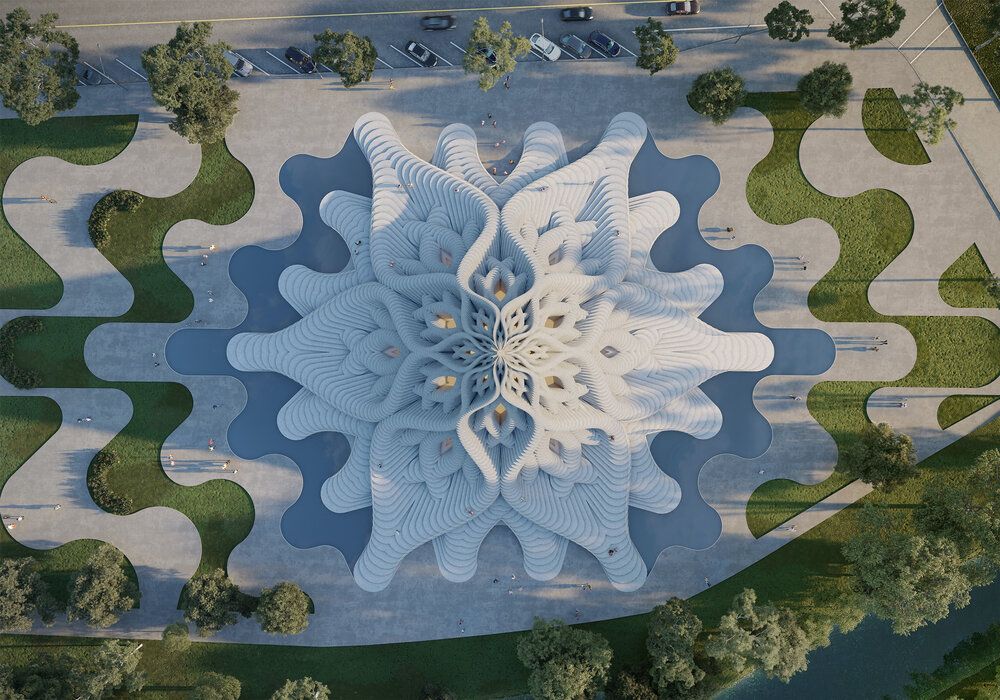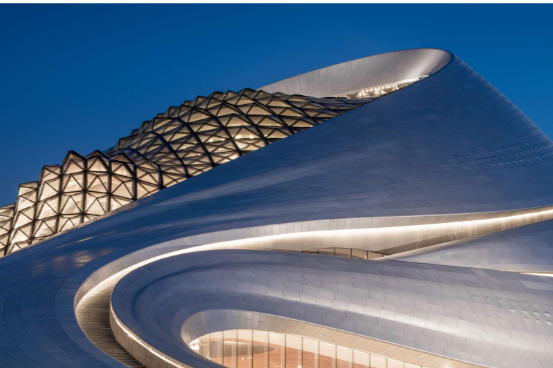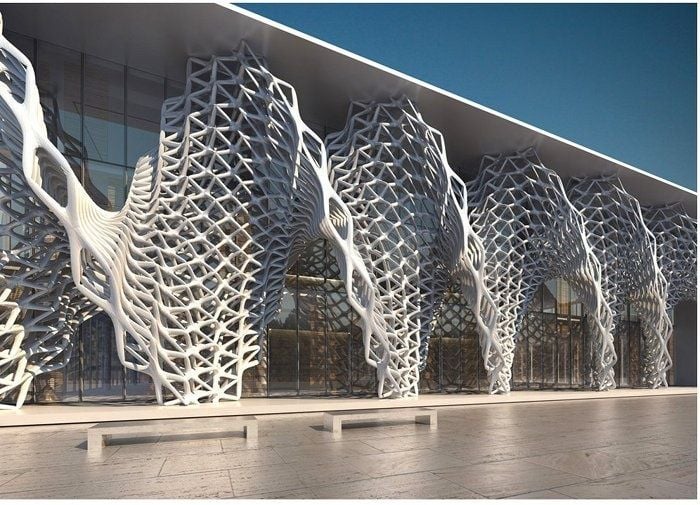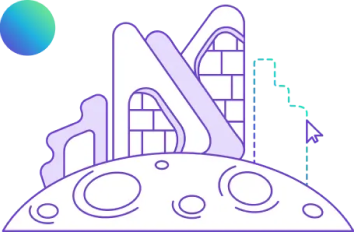Essential Mathematical Concepts for Computational and Generative Design

Table of Contents
Computational and generative design rely on mathematics as the invisible framework behind digital creativity. These design methods combine geometry, algorithms, and logic to create structures that adapt, evolve, and respond to data. According to the Department of Labor Statistics, employment in architecture and engineering fields is expected to grow by 6% between 2024 and 2034, reflecting the increasing use of computational methods in design. As parametric and algorithmic workflows become standard, understanding mathematical concepts for computational design is no longer optional; it’s fundamental.Mathematics shapes the foundation of computational design software such as Grasshopper, Rhino, and Dynamo. These platforms translate mathematical rules into visual outcomes, allowing designers to automate processes, generate forms, and test ideas quickly.
10 Essential Mathematical Concepts for Computational and Generative Design
1. Vector Mathematics

Vectors describe position, direction, and movement in both 2D and 3D space. They are crucial in modelling geometry, calculating orientation, and simulating motion. Designers use operations such as addition, subtraction, dot products, and cross products to determine distances and angles between objects.
For instance, in façade design, vector calculations determine how sunlight interacts with surfaces. The Al Bahar Towers in Abu Dhabi applied vector mathematics to orient kinetic shading panels dynamically, optimising solar performance.
In Grasshopper computational design, vectors form the foundation for manipulating points and geometries, making them indispensable for any designer aiming to work efficiently with generative systems.
2. Linear Transformations

Linear transformations allow precise manipulation of geometric objects through scaling, rotation, and translation. These operations use transformation matrices to adjust forms in space and compose multiple modifications systematically.
This concept is essential in robotic fabrication, where machines interpret design data through coordinate transformations. For example, the ICD/ITKE Research Pavilion (2024) employed linear transformations to synchronise multiple robotic arms during large-scale 3D printing, maintaining precision and consistency.
Within computational design software, linear transformations provide the mathematical structure for spatial manipulation, ensuring accurate translations between digital and physical outputs.
3. Parametric Equations

Parametric equations define curves and surfaces through adjustable parameters, giving designers control over complex forms. They are fundamental to Essential Mathematics for Computational Design, enabling dynamic geometries that respond to variable inputs.
In practice, these equations guide the formation of structures like the Beijing National Stadium (“Bird’s Nest”), whose intricate steel web was generated using parametric rules. Designers adjusted parameters linked to load, curvature, and spacing to maintain structural efficiency and aesthetics.
In Grasshopper Math, parametric equations underpin the creation of NURBS surfaces, spline curves, and algorithmic forms, enabling adaptability and precision in the design process.
4. Trigonometry

Trigonometric principles, sine, cosine, and tangent, are vital in defining angles, rotations, and oscillations. In computational design, trigonometry supports wave generation, rotations, and circular motions.
In acoustic panel systems, trigonometric sequences define well depths to optimize sound diffusion. These mathematical calculations ensure sound waves scatter evenly across spaces while maintaining visual appeal.
When combined with Grasshopper computational design, trigonometric functions can generate fluid, organic geometries and periodic structures that mimic natural rhythms in architecture and product design.
5. Interpolation

Interpolation enables smooth transitions between data points, geometries, and colours. It is used in morphing shapes, blending surfaces, and animating movements. Linear interpolation (lerp) defines gradual changes, while easing functions simulate natural motion.
A practical example is the Morpheus Hotel in Macau, where interpolation guided the transformation of its exoskeleton. The algorithm generated seamless structural transitions between different sections, balancing form and function.
6. Coordinate Systems

Designers use coordinate systems to define the position of points in space. Mastery of Cartesian, polar, and UV coordinates is essential for mapping geometry accurately in both digital and physical environments.
In digital fabrication, especially CNC milling or robotic assembly, switching between coordinate systems ensures precision. The “Digital Thicket” installation at the Tallinn Architecture Biennale demonstrated this by aligning tool paths with material grain directions, preventing structural failure.
For professionals using mathematical concepts for computational design software, understanding coordinate transformations is critical for bridging digital models and real-world execution.
7. Probability and Randomness

Generative design often involves controlled randomness to simulate organic variation. Probability functions and random distributions help create patterns that appear natural yet intentional.
In the Louvre Abu Dhabi dome, probability distributions guided the arrangement and density of perforations, creating the iconic “rain of light” effect. This controlled use of randomness strikes a harmonious balance between geometric order and organic irregularity, resulting in a structure that feels both precise and poetic.
By combining randomness with algorithmic constraints, designers achieve complexity in form generation, a principle central to Essential Mathematics for Computational Design.
8. Modular Arithmetic

Modular arithmetic, which manages repeating and cyclic patterns, is fundamental for algorithmic repetition. It allows wrapping behaviours, symmetry, and looped animations.
This principle was applied in the Siemens Headquarters façade in Masdar City, where each brick’s rotation followed a modular arithmetic rule. The result was a rhythmic shading system combining efficiency with design harmony.
In Grasshopper Math, modular arithmetic enables designers to automate repetitive geometric sequences, ensuring continuity across large parametric models without manual input.
9. Graph Theory

Graph theory studies networks and relationships between connected elements. In computational design, it supports pathfinding, network optimisation, and structural or spatial analysis.
Architects employ graph-based algorithms to model circulation paths, structural frameworks, or façade logic. For example, spatial planning in complex facilities can be optimised using graph layouts that ensure efficient movement and visibility.
10. Optimization for Generative Design

Optimization is at the centre of generative design. It involves using mathematical algorithms to balance competing objectives such as weight reduction, strength, cost, and aesthetics.
The Qatar National Convention Centre’s tree-like façade exemplifies this concept. Using topology optimization, engineers identified the most material-efficient design to meet structural and visual goals.
Conclusion
These ten mathematical foundations form the intellectual framework of modern computational and generative design. In professional practice, integrating mathematical concepts for computational design enhances both creativity and efficiency. Mastering these principles within computational design software such as Rhino and Grasshopper not only refines technical accuracy but also expands creative potential.
Advance your design career with the Master Computational Design Course by Novatr, a specialised program that bridges mathematics, architecture, and technology to help you build real-world parametric and generative design skills used by top professionals globally.
Visit our resource page to get started and receive expert guidance on advancing your career.

 Thanks for connecting!
Thanks for connecting!



.png)




